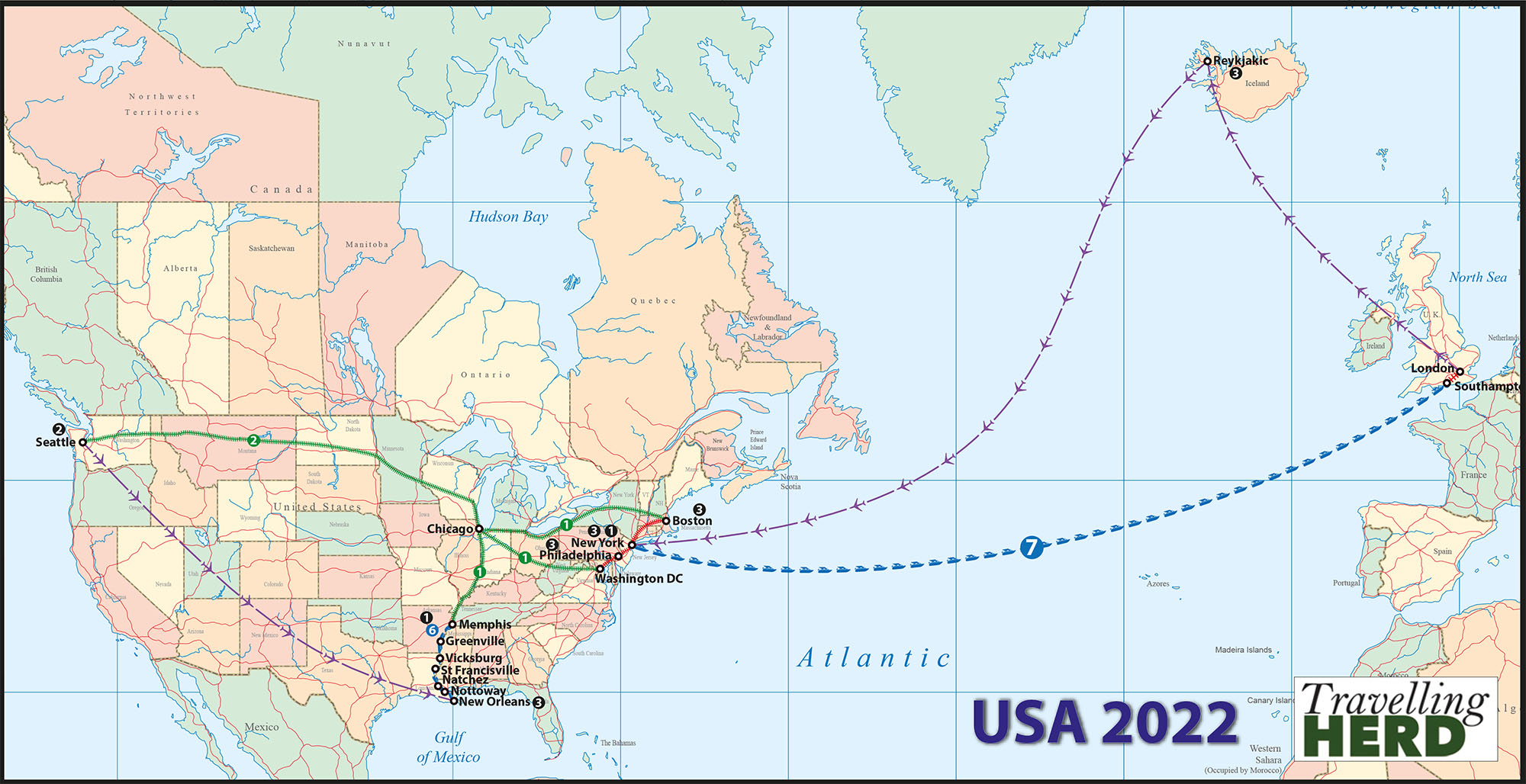Friday 6th May 2022
Boston is justifiably proud of its role in America gaining independence and there are plenty of informative plaques and signs around the city celebrating this.
We decided to save some walking time and complete the Freedom Trail by taking the Red Line subway route into the city and picking up the Trail to walk up to Bunker Hill where, on June 17th 1775 during the Siege of Boston, New England soldiers faced the British army for the first time in battle.
The 221 foot granite obelisk erected in 1843 to commemorate the Battle of Bunker Hill is actually sited on Breeds Hill where most of the fighting took place. Although the British won this particular encounter, the battle provided the patriots with a real boost to morale as it became apparent that, although inexperienced, they could, with determination, overcome superior British numbers.
The monument itself is currently closed and we were not able to climb up inside for the views on this visit.
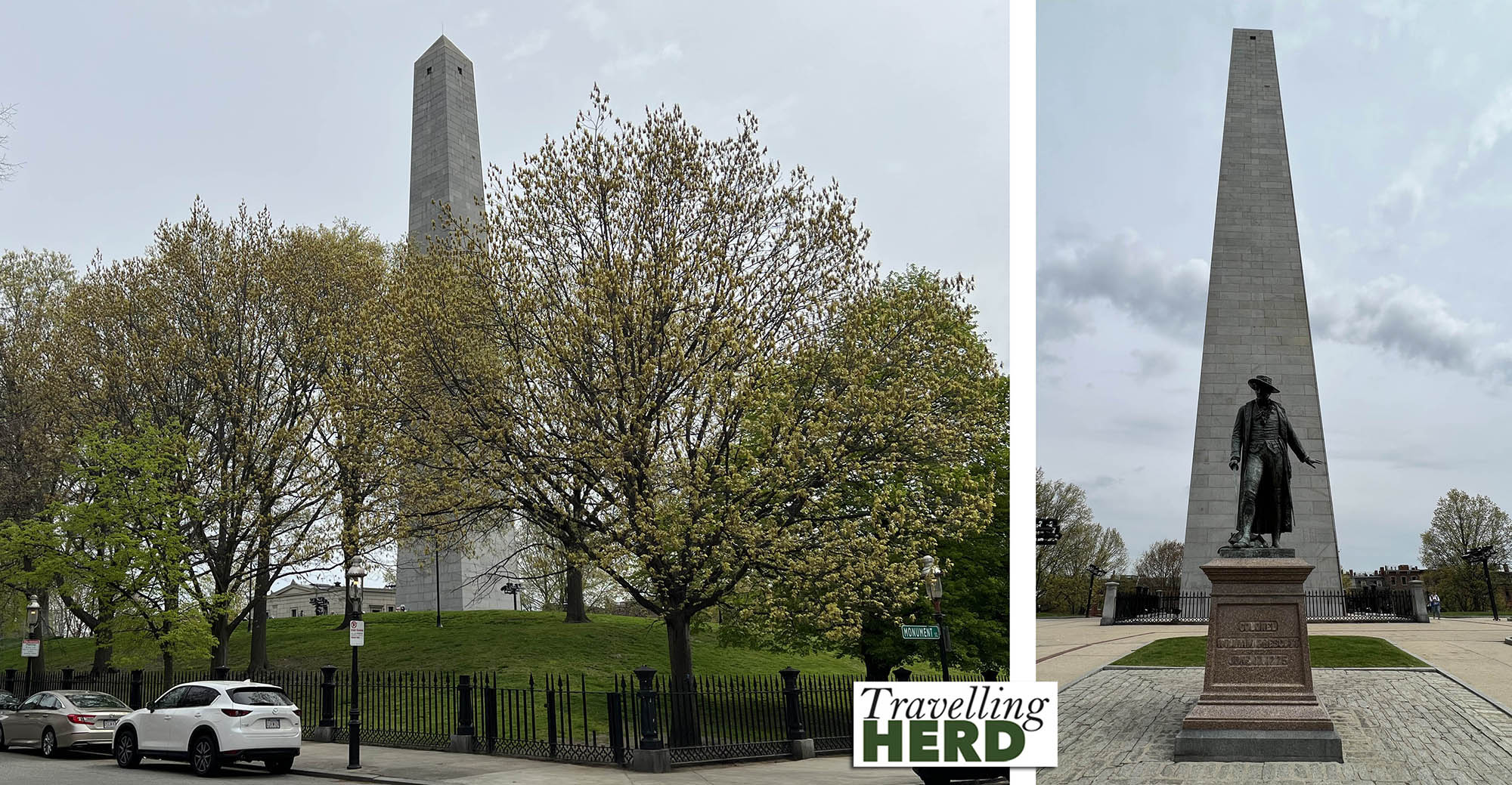
From here we walked to the Charlestown Navy Yard, which was established in 1801 following the creation of the new U.S. Department of the Navy in 1798. It was operational until 1974 and is well preserved. Some of the residential buildings, such as the Commandant’s House, Officer’s Quarters and Marine Barracks seem untouched. It is home to the USS Constitution also known as Old Ironsides.
She was built in 1797 and is the world’s oldest ship still afloat. [HMS Victory is three decades older but has been in dry dock since 1922.]

USS Cassin Young is also docked here and evokes World War II and the period afterwards. Although she was not built here, workers at the Charlestown Navy Yard developed sonar technology which was installed in the USS Cassin Young during the Cold War.

Dry Dock 1 is one of America’s first two granite dry docks, built in 1833 to make ship repairs faster, easier and safer. The first vessel to enter the dry dock for repairs that same year was the USS Constitution. The adjacent Dry Dock 2 also survives and was full when we visited.
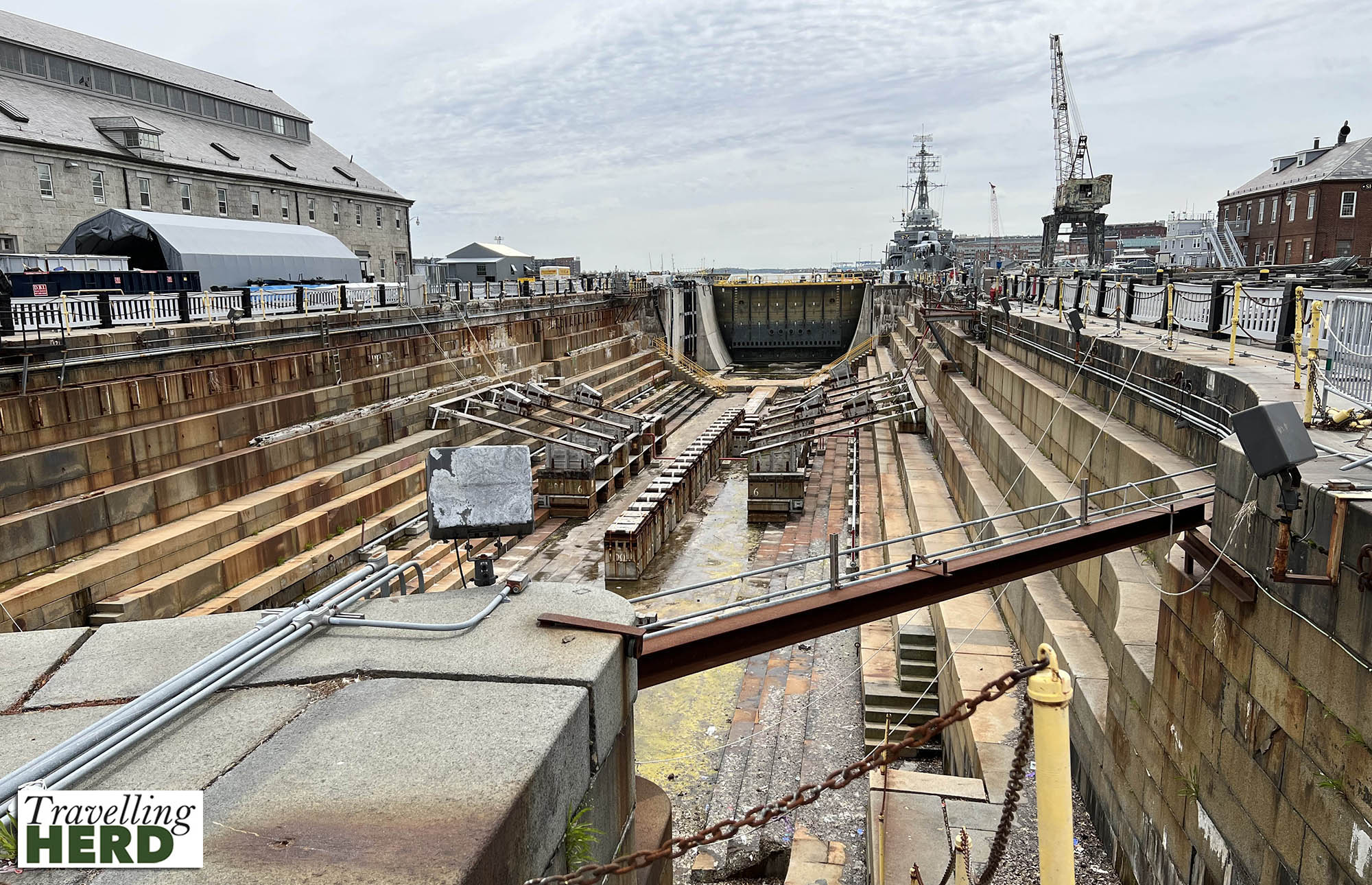
From here we took the Charlestown Ferry back to Long Wharf. . .
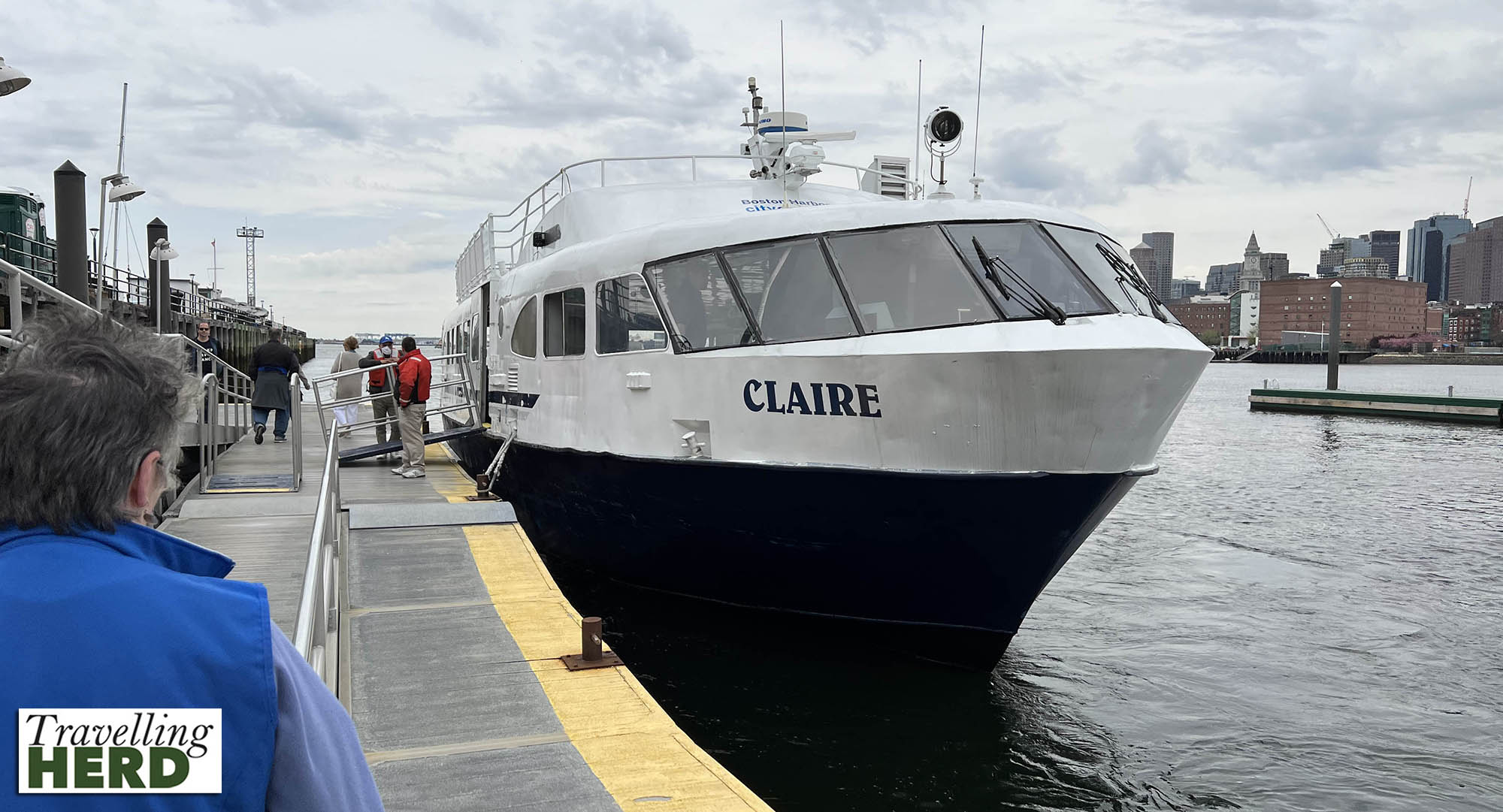
. . . enjoying views of the city from the water.

Returning to some of the places on the Freedom Trail, we revisited Old North Church, Boston’s oldest surviving church building. It is famous for being the place from which the Americans signalled to warn of the advance of the British troops via the Charles River: as Longfellow put it“One, if by land, and two, if by sea”.
Two lanterns were hung from the steeple, the highest point in Boston at the time, on 18th April 1775 heralding the start of the American Revolution.
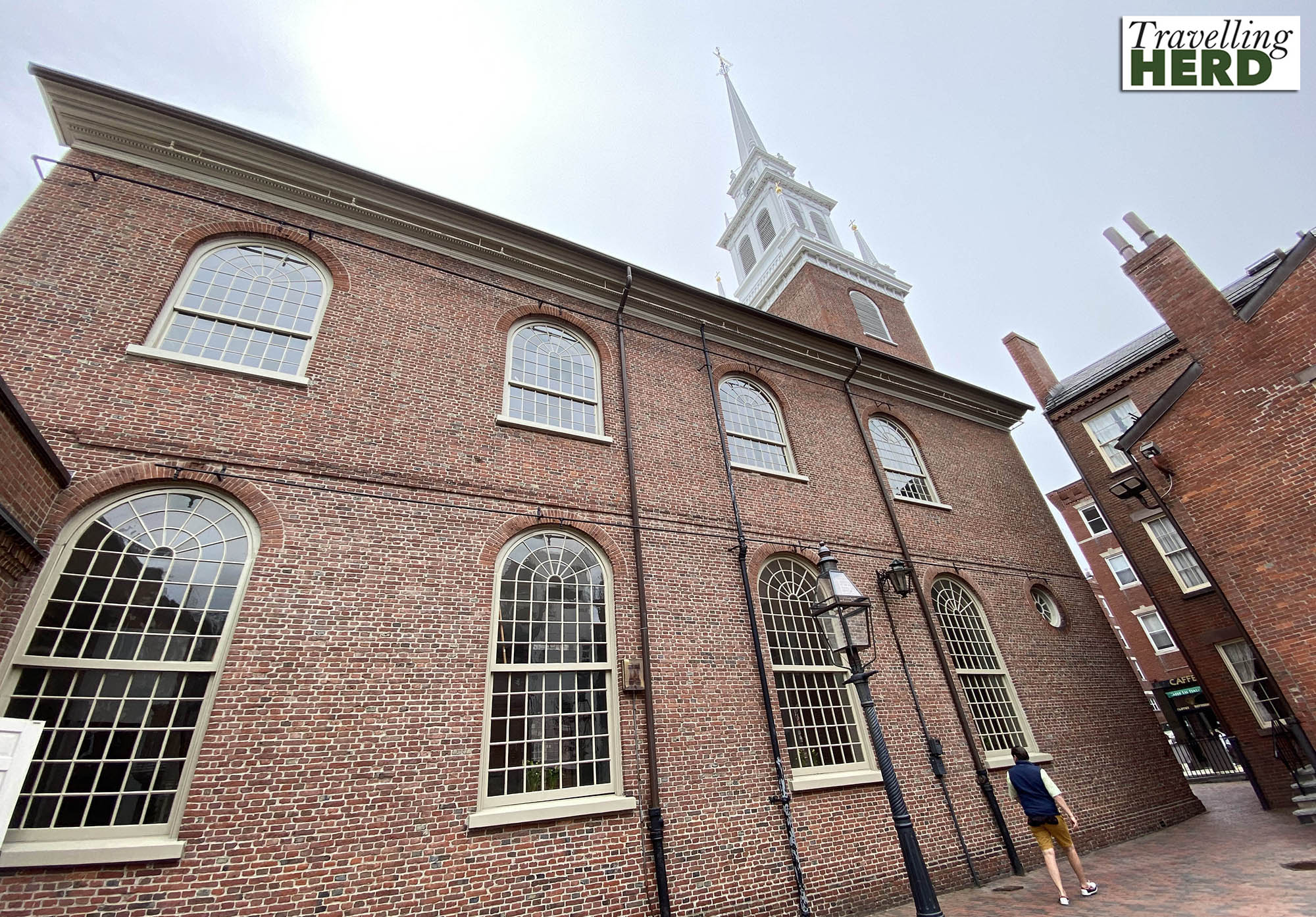
In a lighter vein, a plaque on the wall in the courtyard as you leave, tells the story of John Childs, who on September 13, 1757, having given “public notice of his intention to fly from the steeple. . . performed it to the satisfaction of a great number of spectators”. That would have been a sight indeed. Following his third flight, the next day, he was banned from undertaking anymore.
Old North Church is well worth the $5 entry fee and the box pews inside have informative signs about the families who owned and worshipped in them including one bought by Paul Revere’s son and still owned by the family. The box pews reminded us of the ones at St Mary’s Church in Whitby.
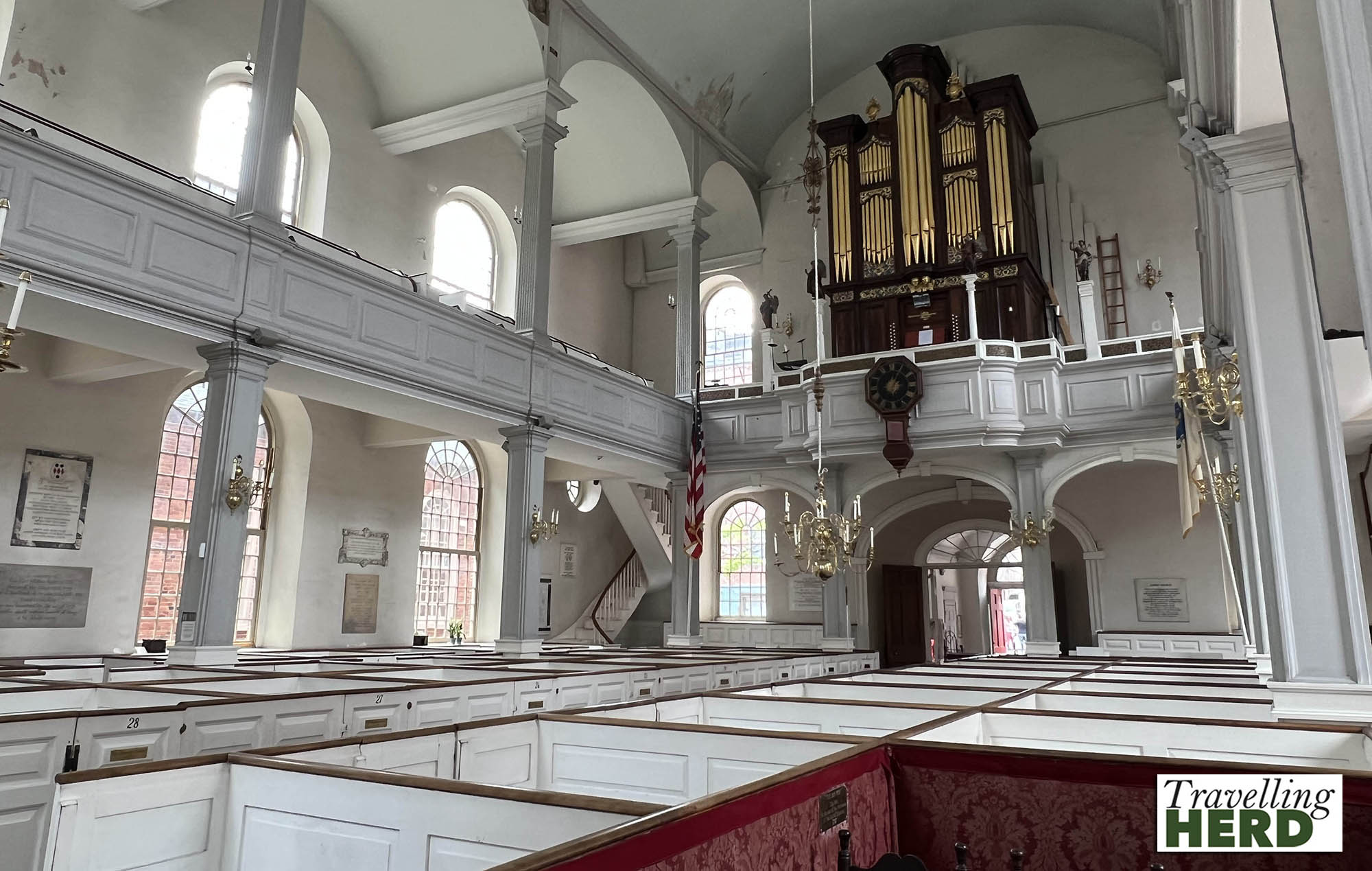
We continued on and browsed the wares on offer in the Boston Pubic Market.
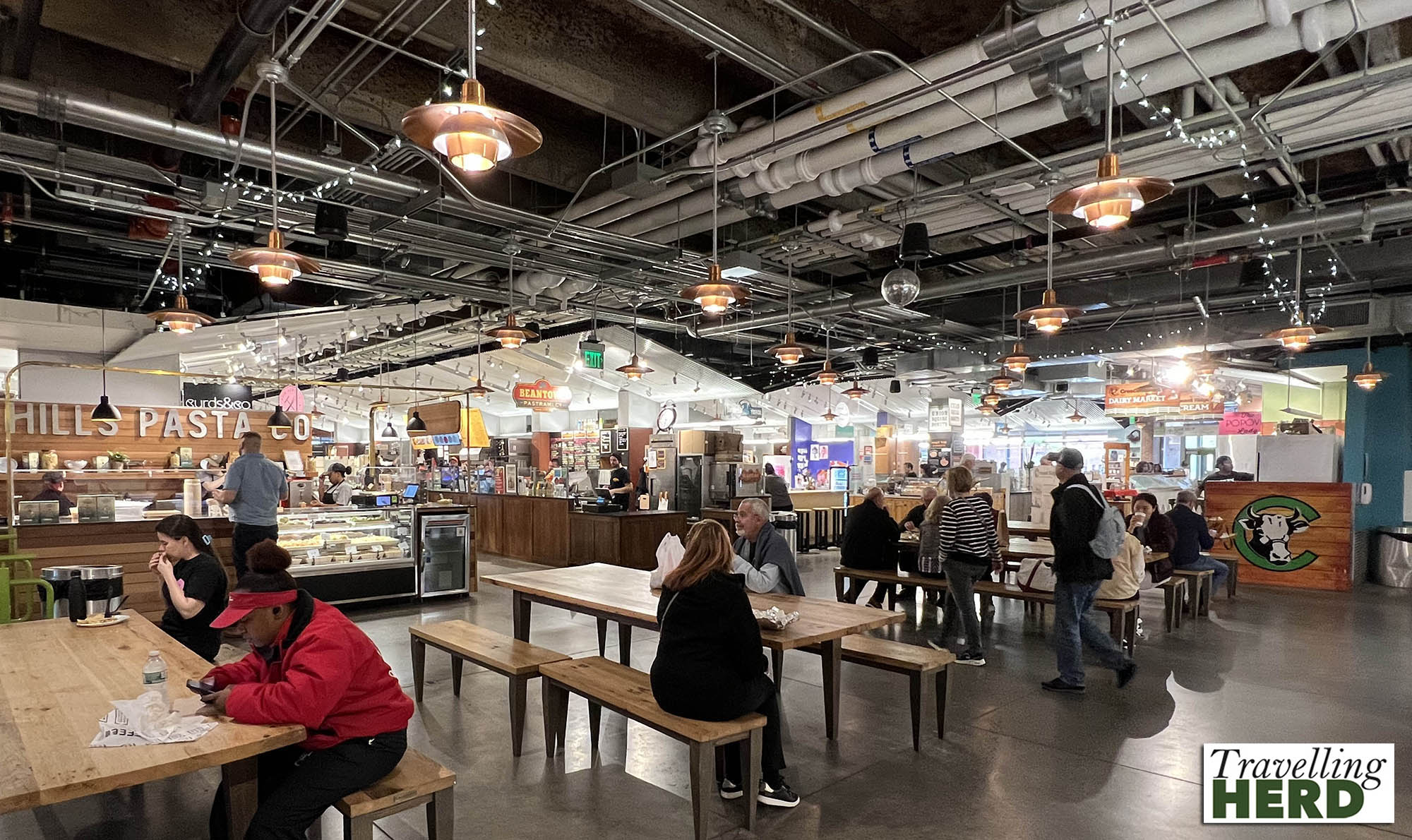
The New England Holocaust Memorial was erected in 1995 and comprises six 54 foot high glass towers, one for each of the major extermination camps and one for each of the six years that the mass extermination took place. Engraved on the outside walls of each tower are groups of numbers representing the six million Jews murdered in the Holocaust. Inscribed on the inner walls are quotes from survivors of each camp. The towers are lit from above and steam rises up through metal grates from a dark floor.
It was obvious that many visitors were deeply moved by the memorial, whilst others were unfortunately, treating is as a playground for their children.
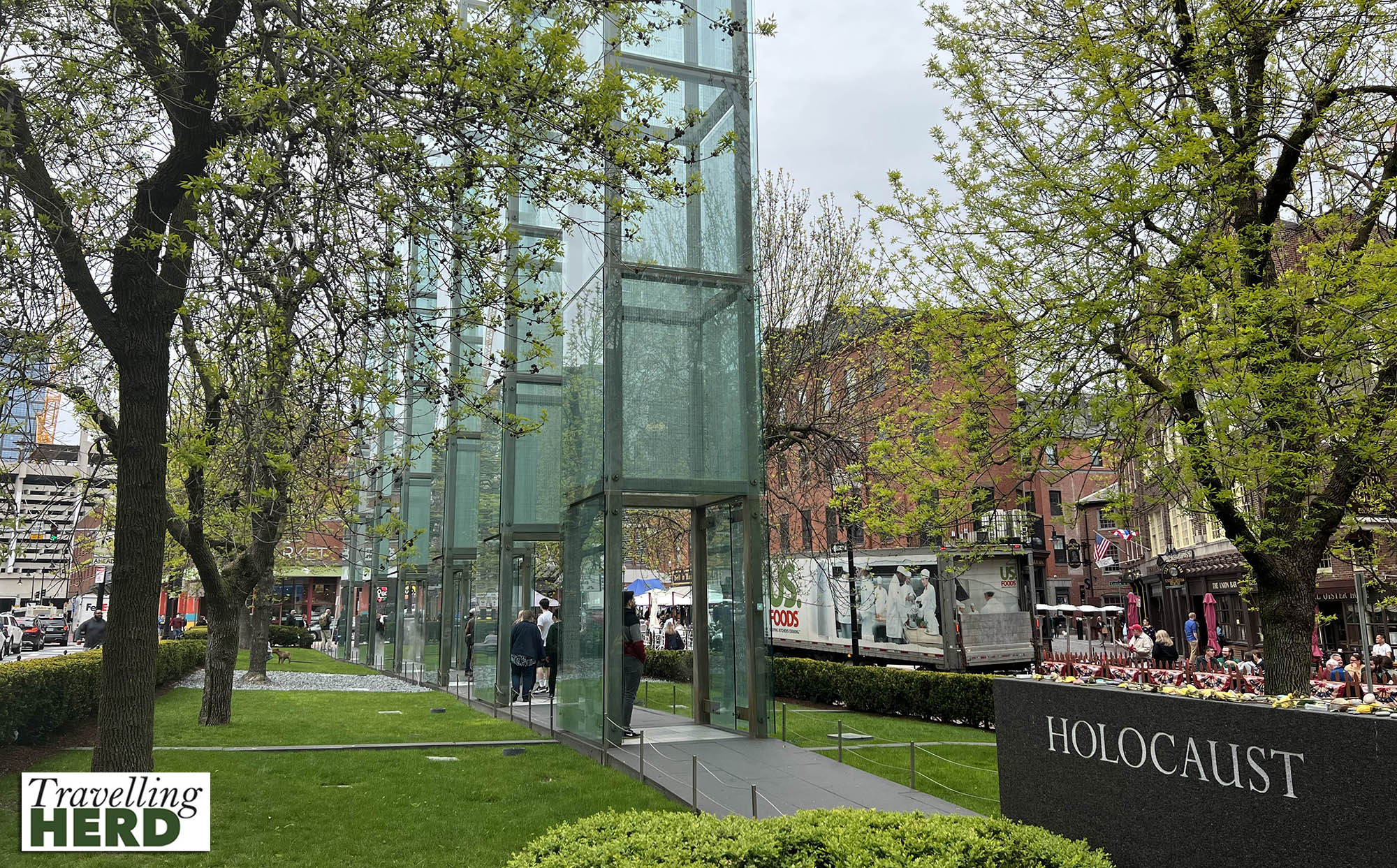
The interior of King’s Chapel seems at odds with its dark stone exterior. It also has box pews with even more information about notable members of the congregation on display. As well as its links to the British monarchy [see previous blog], the first official acceptance of the Unitarian faith by a congregation in America was here when it took James Freeman (1759–1853) as its pastor in 1782.
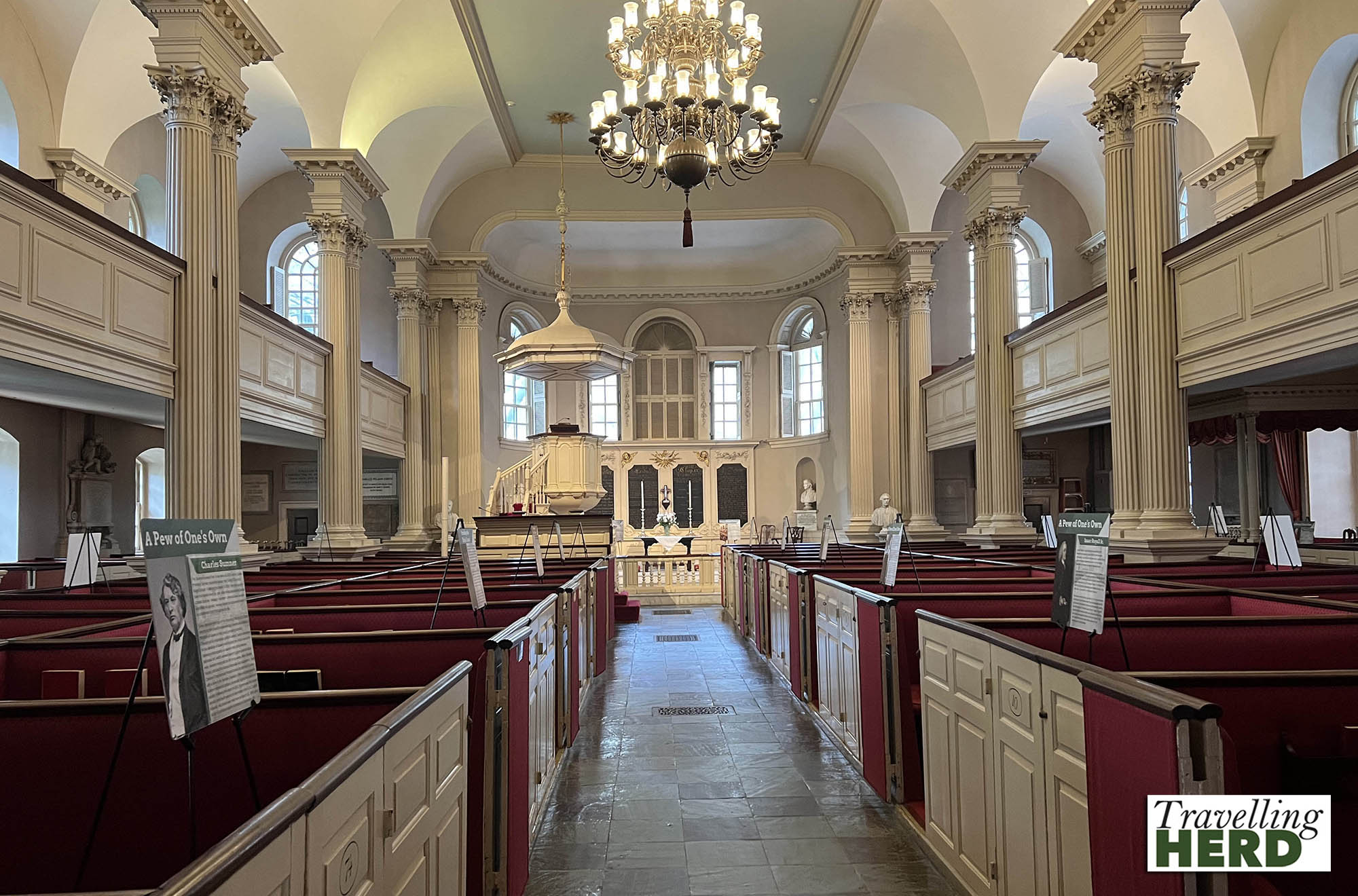
The Massachusetts State House was designed by Charles Bulfinch and opened in 1798. It is now the oldest continually running state capital building in America. Tours are free and although we entered through airport style scanners afterwards we were then free to roam inside this beautiful historic building.
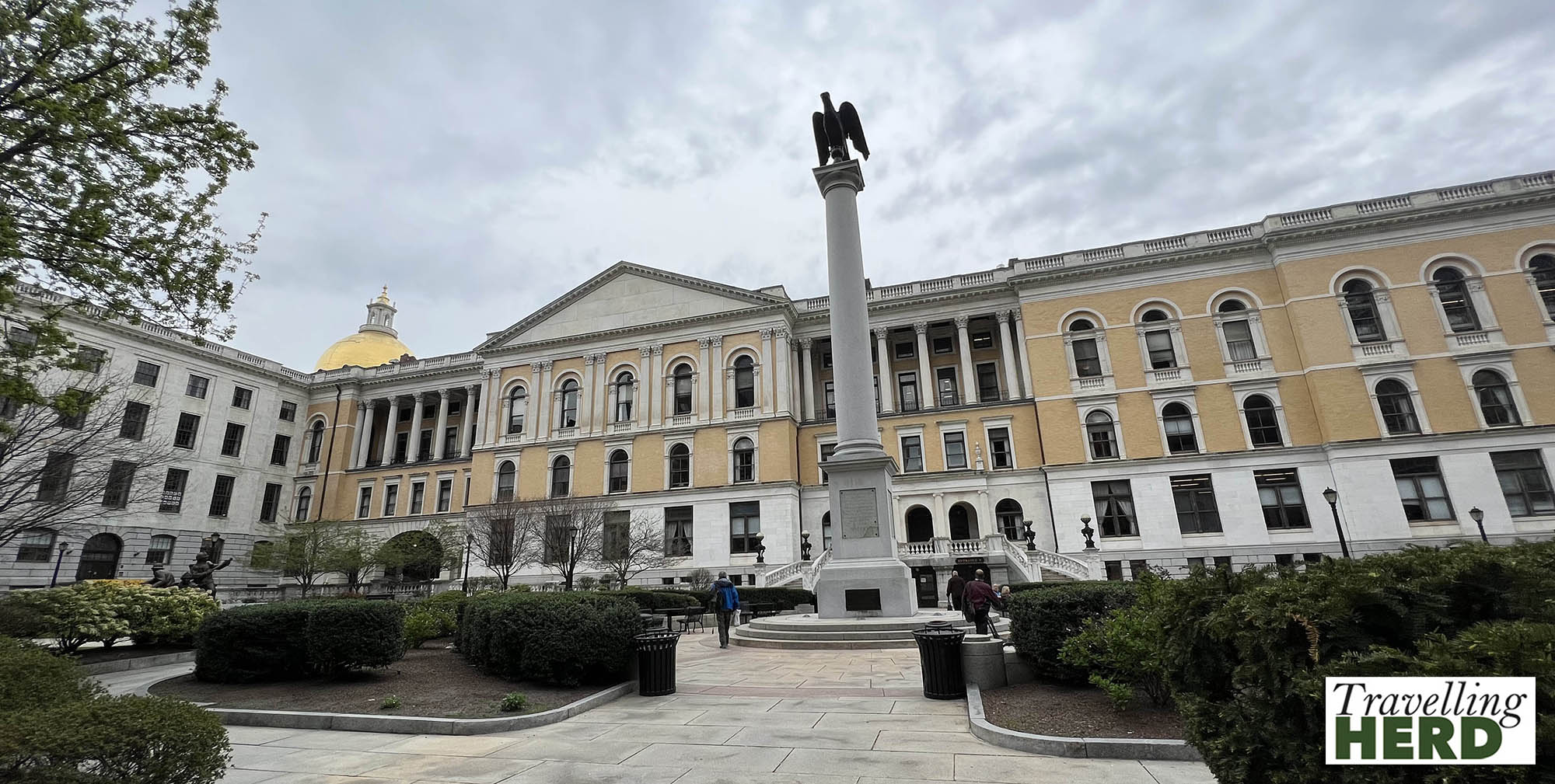
The interiors were indeed splendid.
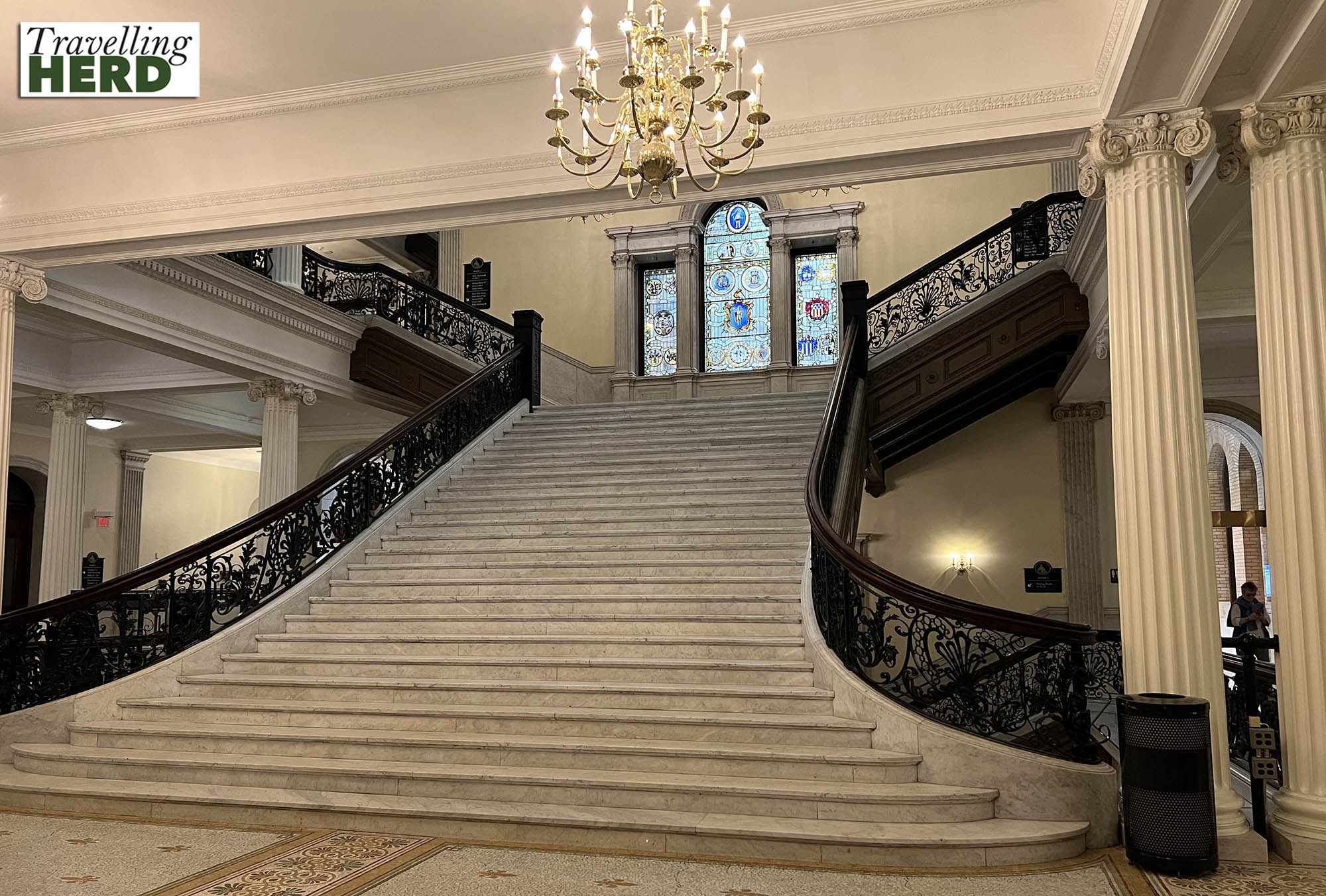
The Memorial Hall or Hall of Flags commemorates Massachusetts soldiers from every major war, from the Spanish American War to the Vietnam War.
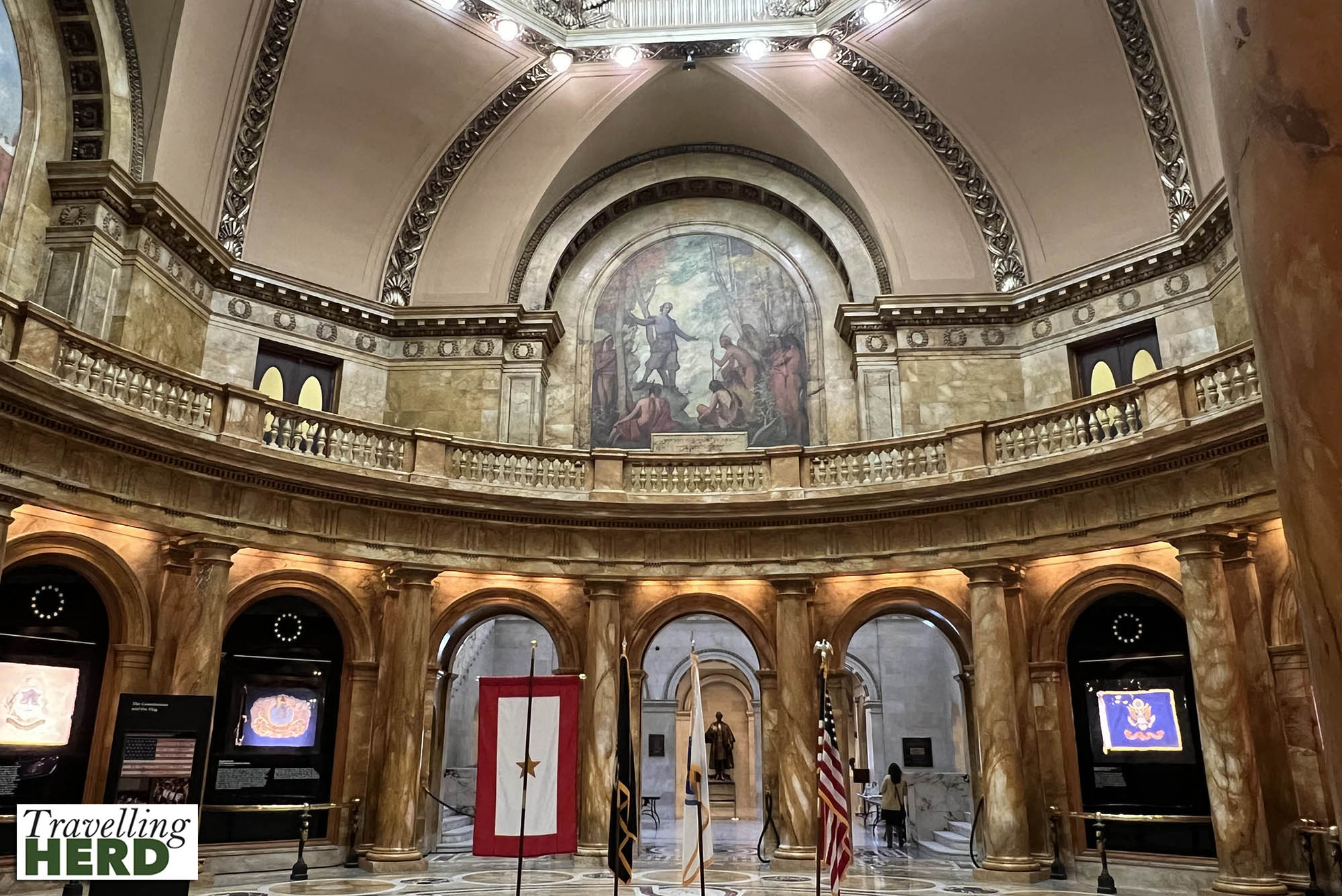
The Nurses Hall takes its name from the first statue to honour the nurses who served in the civil war. The statue is displayed here but only a small section is visible in the bottom right of the photo.
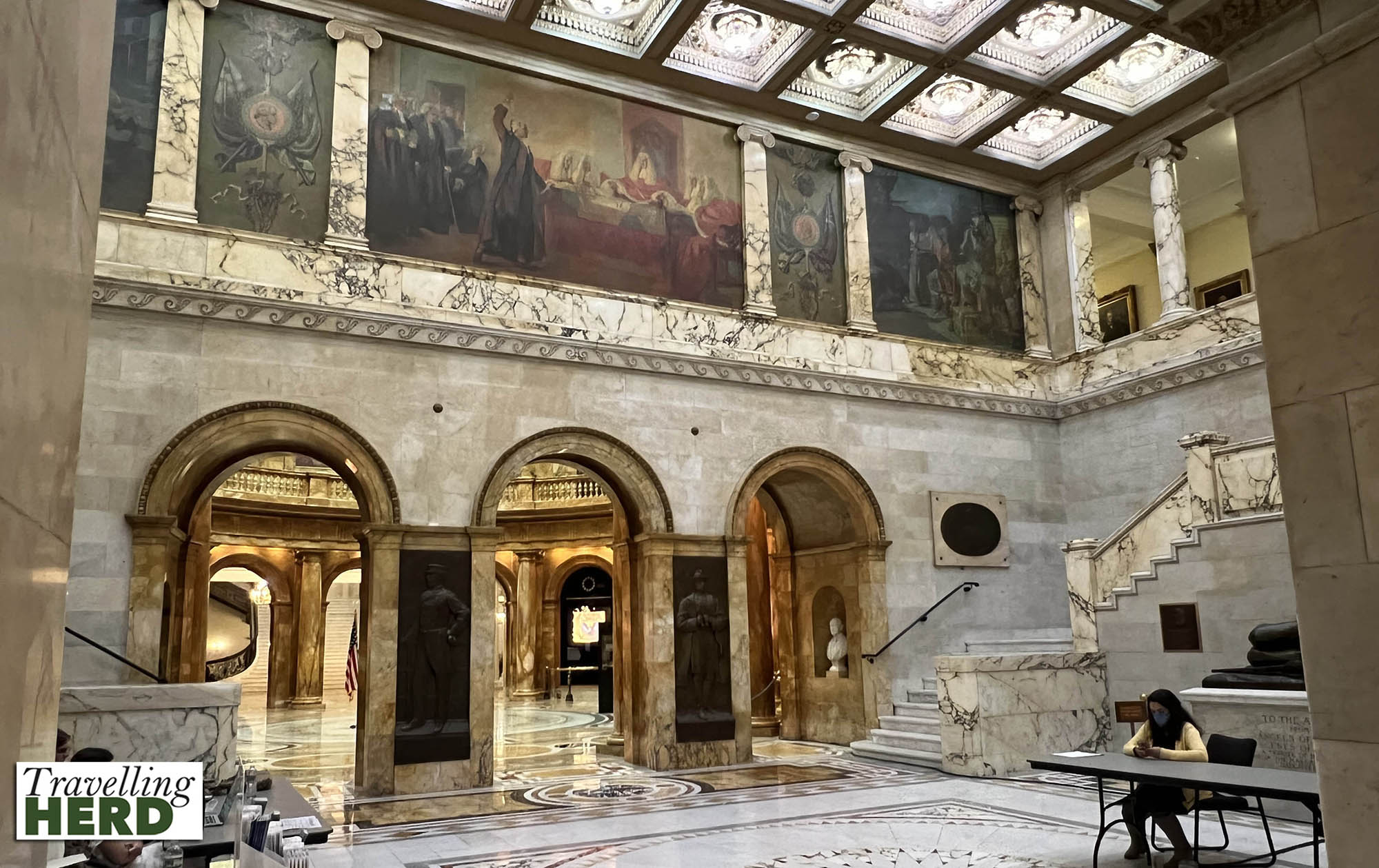
The House of Representatives is also home to their good luck mascot, the Sacred Cod: a four-foot-eleven-inch (150 cm) wooden life-like carving of an Atlantic codfish, which hangs above the clock at the back the House of Representatives.
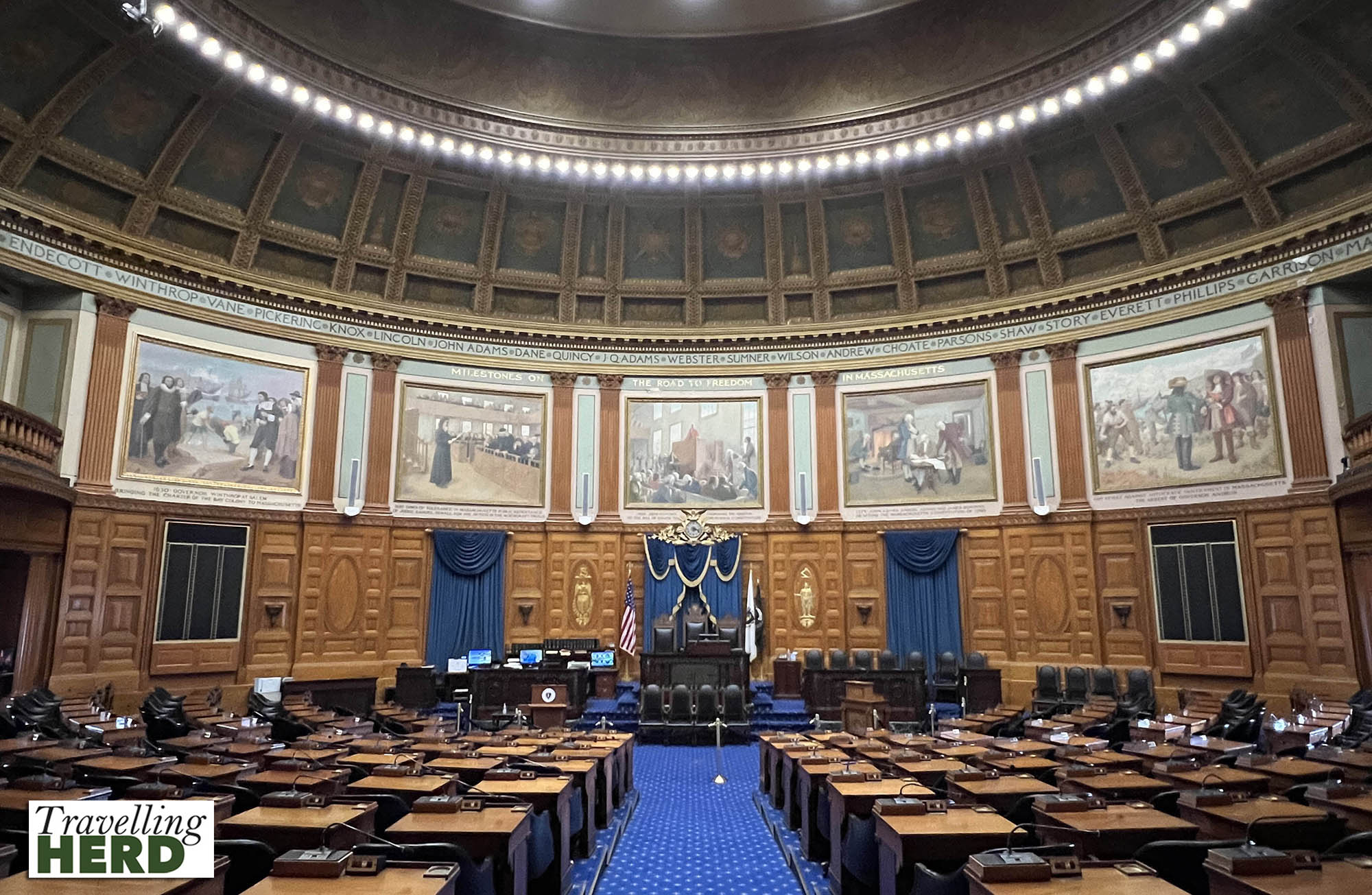
The State Library of Massachusetts is also to be found here and was established in 1826 to “support the research and information needs of government”. It would be a very pleasant place to conduct research although we seemed to be the only people there.
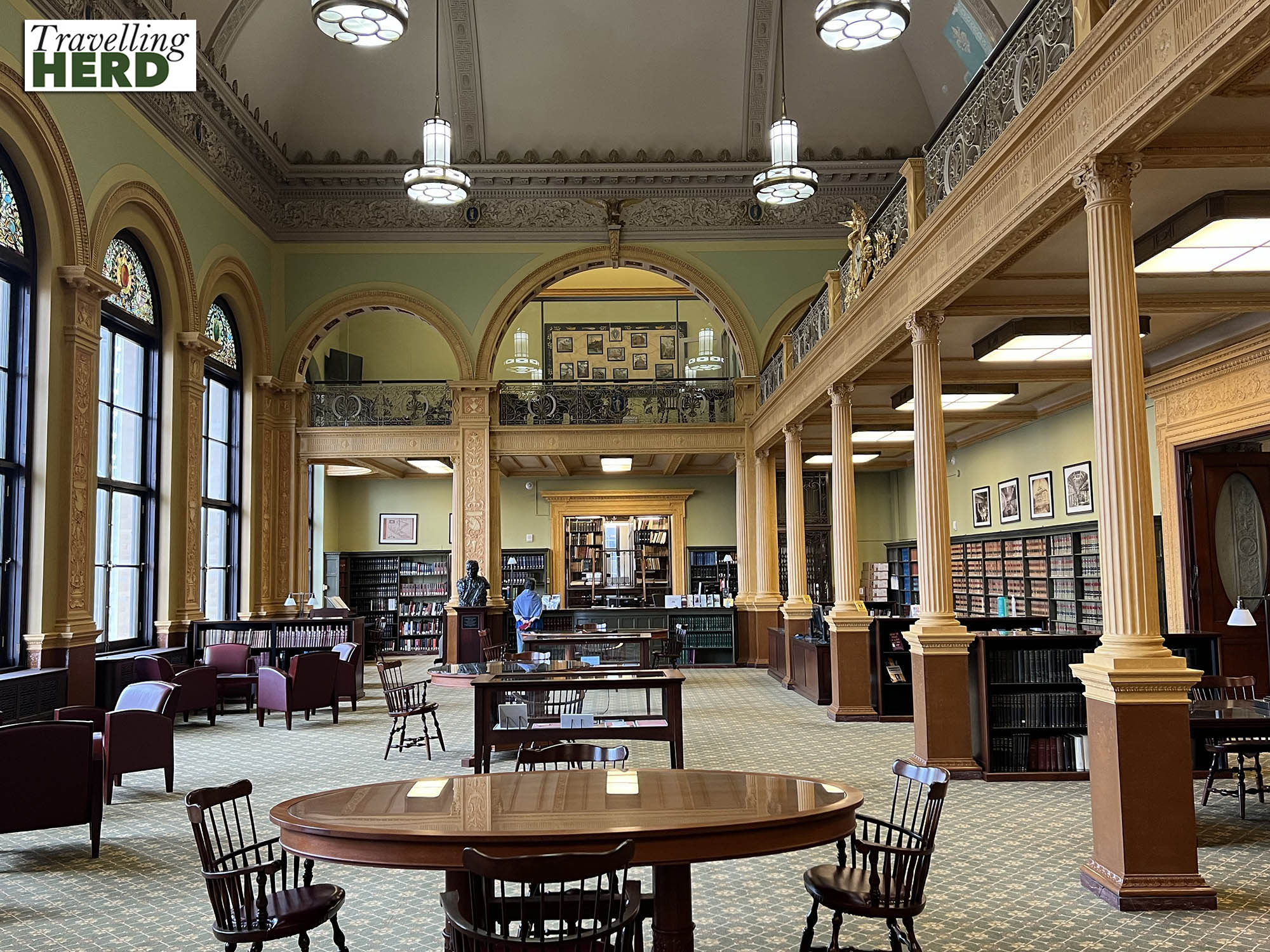
The Great Hall is hung with flags of the Commonwealth of Massachusetts: apparently this helps to deaden the effects of an unfortunate echo. The clock hanging in the centre of the picture is curiously constructed and looks more like a lantern than a timepiece.
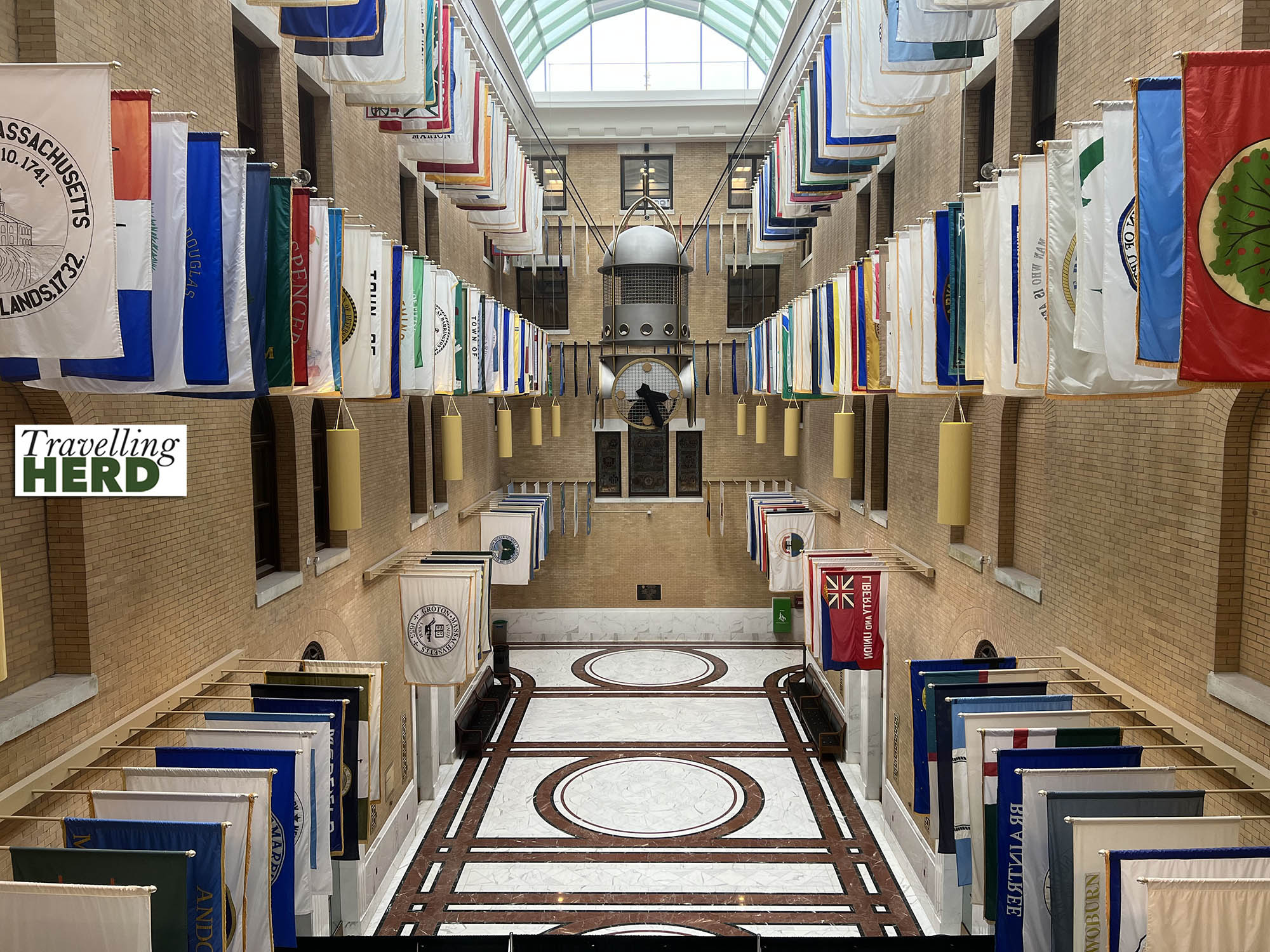
Back outside, the Massachusetts Fallen Firefighters Memorial includes a brick border along the paths with the names of those heroic firefighters who have lost their lives trying to save others.

The splendid Burnham Building, designed by Chicago architect Daniel Burnham was commissioned by Filene’s department store. Completed in 1912, it is said to be one of the best examples of Beaux Arts architecture in Boston. In 2006, Filene’s merged with Macy’s but as there was a Macy’s directly opposite, the Filenes store was eventually closed rather than being rebranded and, completing its downward trajectory, is now home to Primark.
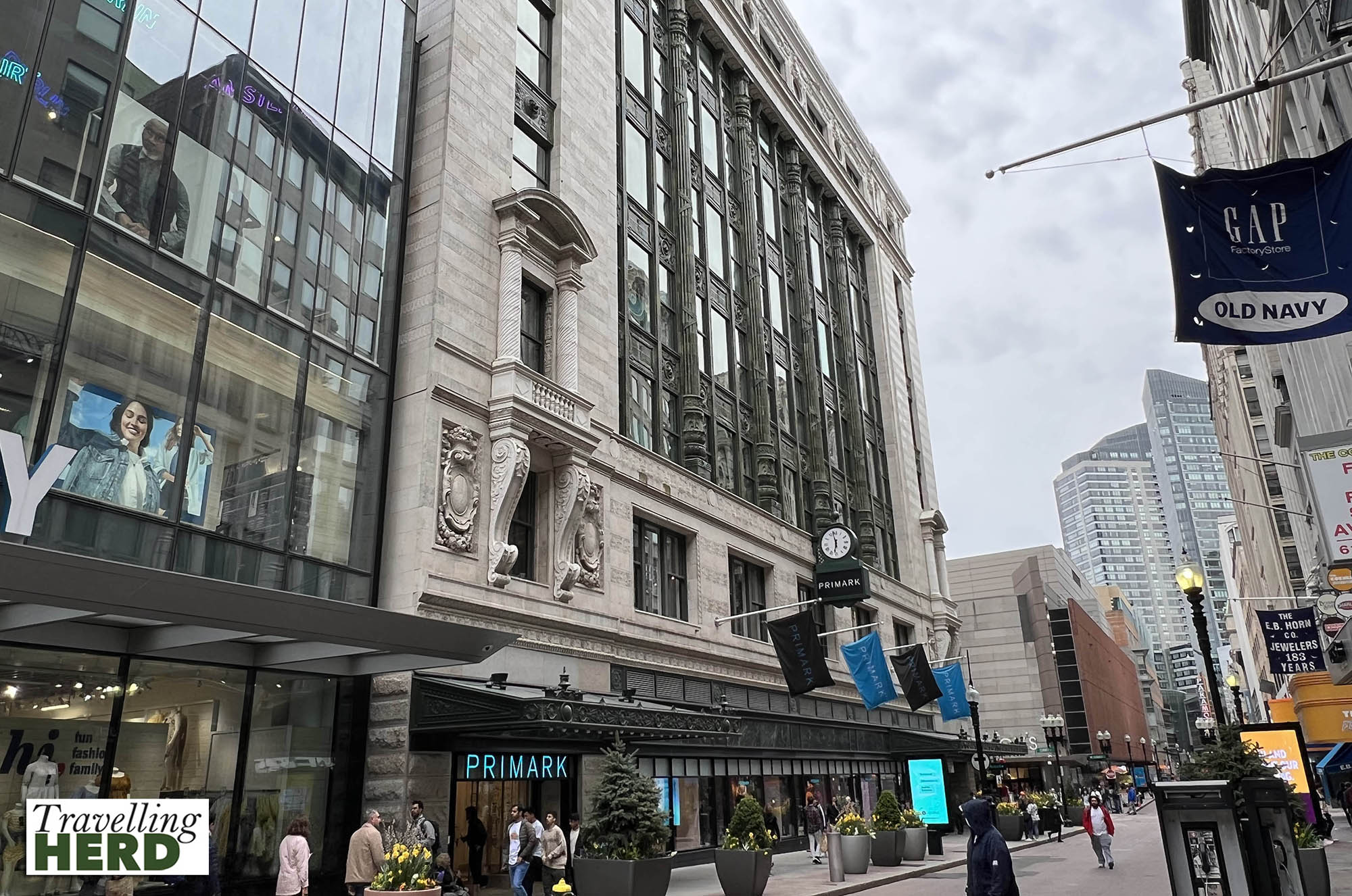
The Elephant and Castle Pub encourages customers “to get your Brit on” which we obviously had no problem in doing and Robert enjoyed a US pint of London Pride, although he pronounced it to be more chilled than it should have been.
Selfie of the day:

Dish of the day:

Route Map:
